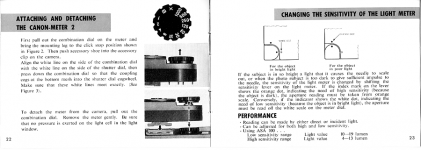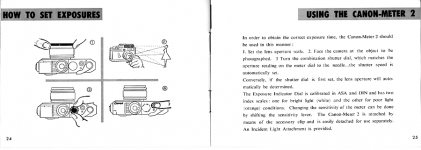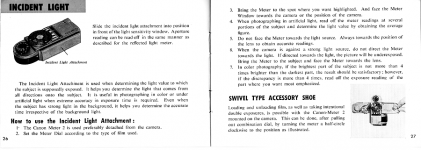Fausto said:
Do vintage rangefinder aficionados use handheld meters, or is it more fun to estimate?
I think the Canon meter is one of the better vintage meters. It does detract from the sleekness of the camera, but it's reasonably sensitive (for a selenium meter) and convenient to use.
Still, a clip-on meter seems to be one of the less-favored options in our group. Others include:
-- Estimating. Personally I don't rely on this, since I often photograph in difficult light conditions, and a meter reading at least provides a starting point.
-- Use a vintage handheld meter with your vintage camera. This is true to the era, since that's what most professional photographers would have done "back in the day." Since I photograph a lot in dim light, for a long time my standard vintage meter was a Weston Ranger 9, which is compact and very sensitive. (I really should send it off to Quality Light Metric to get it calibrated for modern batteries, but the money and the time never seem to arrive together.)
-- Use a modern hand-held meter. I like the little Gossen Digisix, since it can take both reflected and incident readings and is extremely compact. Of course, others might want to use a spot meter, an incident meter, or even one of those combination meters (which might well be larger than your RF camera!)
-- Use a modern clip-on meter. The Voigtlander VCII meter really seems quite slick, and you can either keep it on the camera (convenient when you don't want to carry a bag) or carry it as a hand-held meter.
All these options have their plus points, and there are other alternatives too. Just be careful, or your meter collection may wind up outgrowing your camera collection!




